One of this year’s biggest watch-world stories is the 60th anniversary of the iconic Omega Speedmaster. In this series of feature articles, we explore some of the collection’s milestones, decade by decade. This week, we look at models starting with the very first Speedmaster in 1957, up to the legendary Mark II and Alaska I prototype from 1969.
1957: The “Broad Arrow”
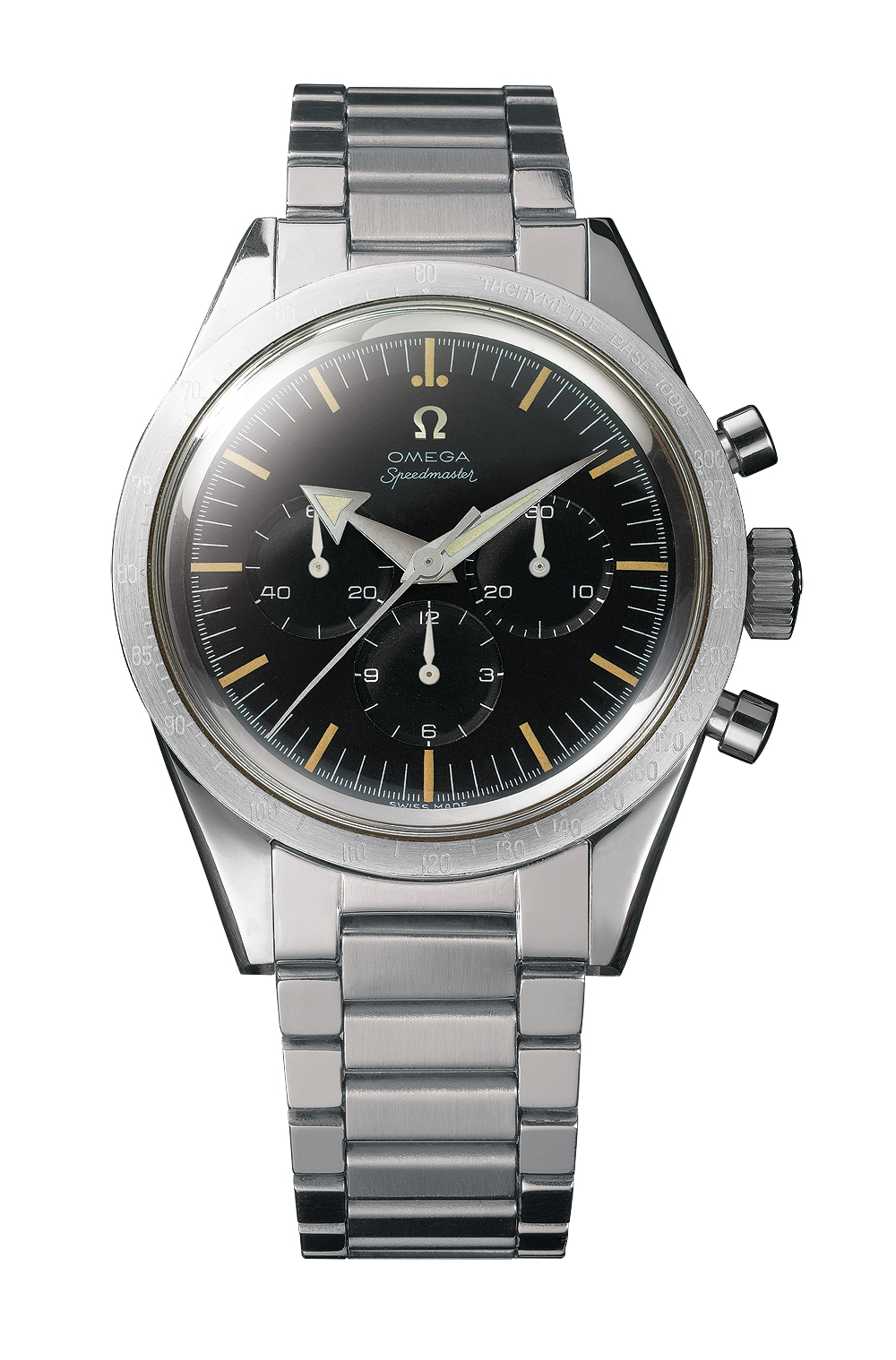
The very first Omega Speedmaster was nicknamed the “Broad Arrow” due to its distinctive hands. It was also the first chronograph wristwatch in the world with its tachymeter scale on the bezel rather than printed on the dial — a feature designed with race car drivers in mind. Perhaps the most coveted of all the Speedmasters, it heralded many other collectible models to come.
1959: The First Omega in Space

The second version of the Speedmaster is distinguished from the original “Broad Arrow” by its use of a black aluminum bezel, its “lollipop” seconds hand for Air Force orders, and its “Alpha”-style hour and minute hands. The model became the first Omega watch worn in space, on the wrist of astronaut Walter Schirra, on October 3, 1962. Schirra chose the Speedmaster as his personal watch on the Sigma 7 mission of the Mercury program. The Speedmaster’s space legacy had begun.
1963: The Third Generation, NASA-Tested and -Qualified
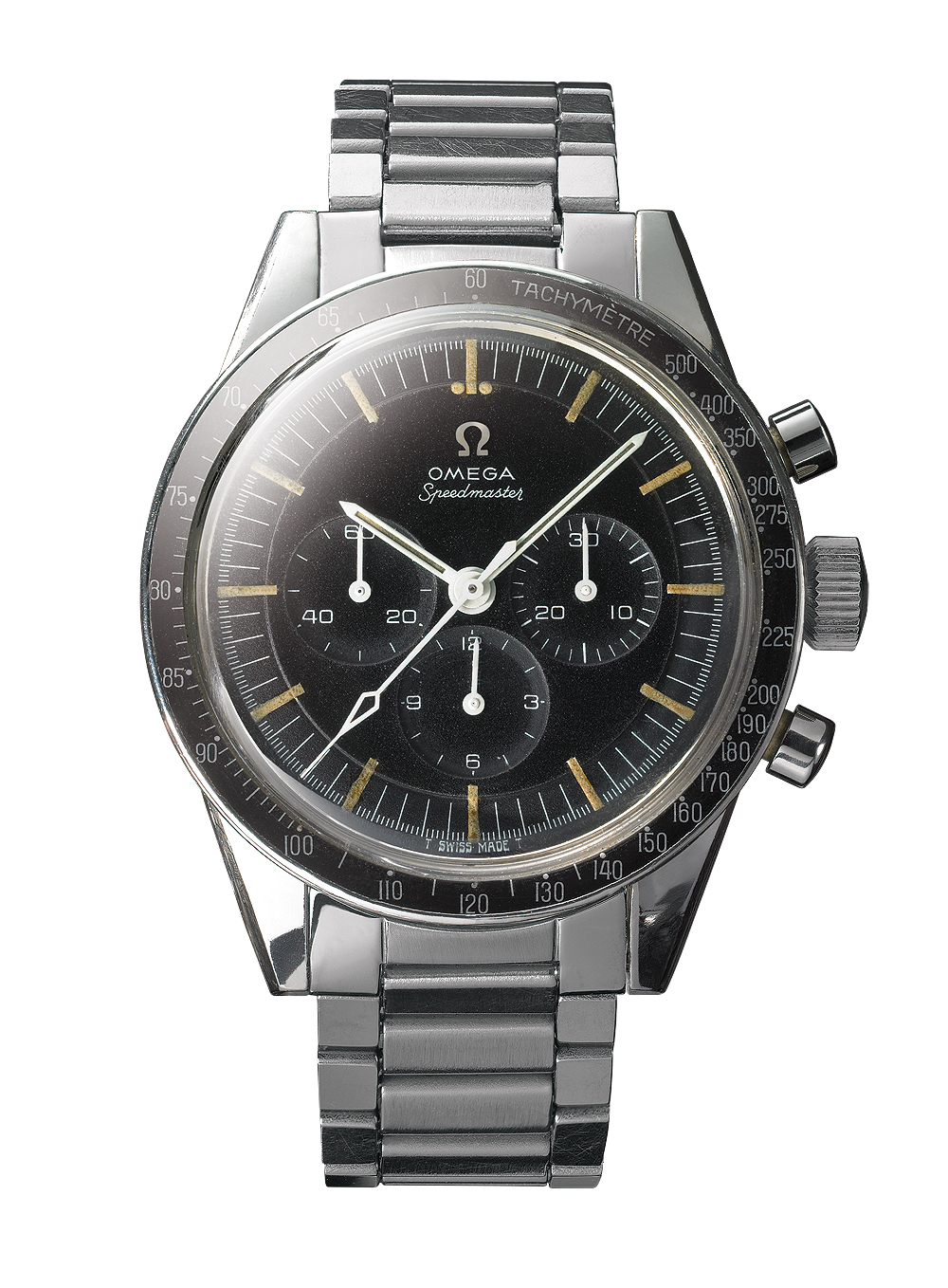
The third-generation Omega Speedmaster was the first watch to pass NASA’s rigorous testing for flight qualification. A number of other watch brands submitted timepieces for testing, but only the Speedmaster survived. This watch was worn by astronauts on the Gemini and Apollo missions, and would also become, interestingly, the last one worn on the moon in 1972.
1964: A.C.P. (Automovil Club Peruano)
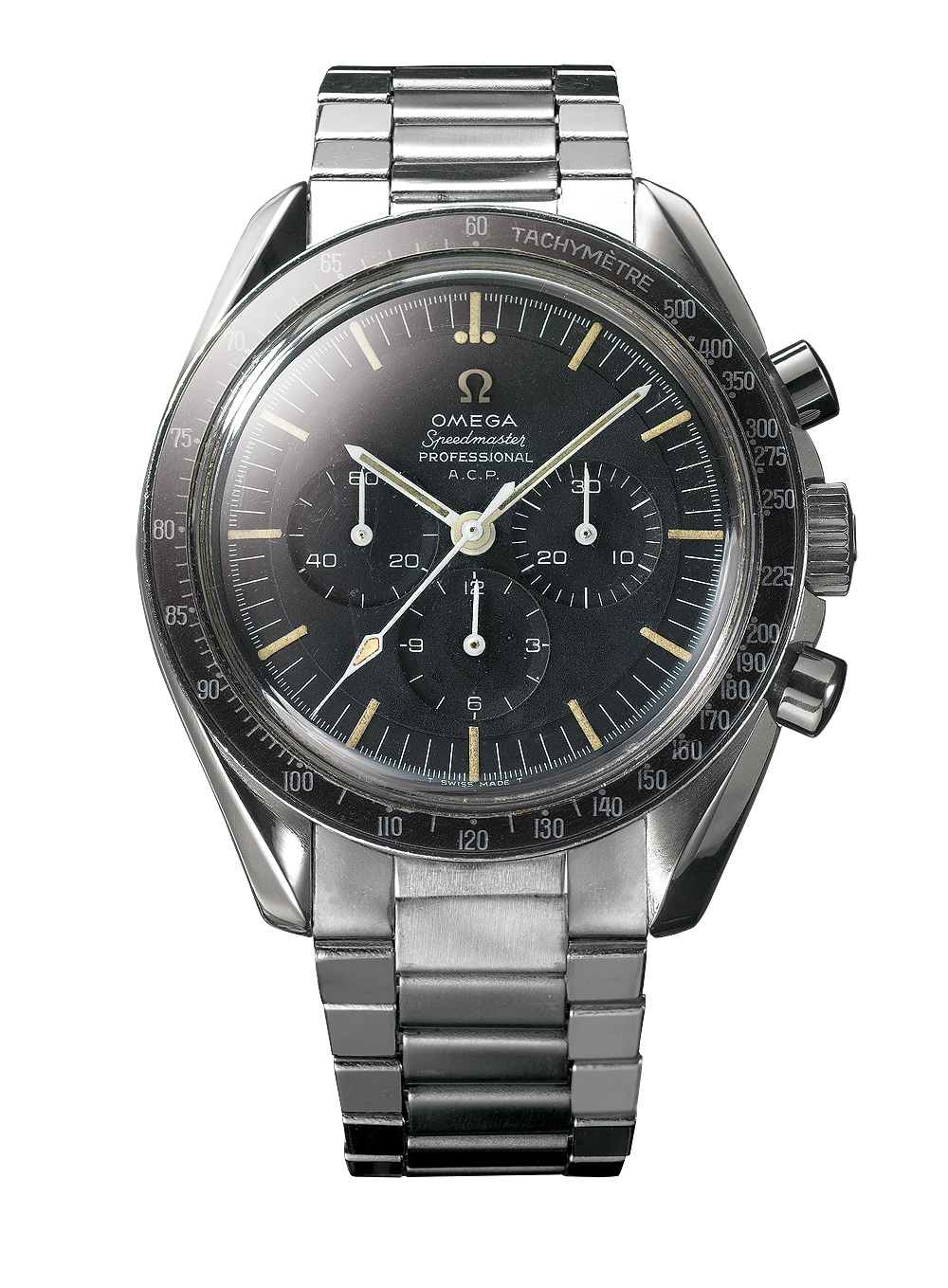
Hearkening back to the Speedmaster’s origins as an auto racing watch, this rare model was specially ordered by the Automovil Club Peruano, based in Lima, Peru. The tachymeter scale on the bezel was intended for timing laps on the racetrack. With an order of just 50 pieces, and identified by the A.C.P lettering on the dial, this model is extremely hard to find and thus very prized among collectors.
1965: The First Watch on the Moon
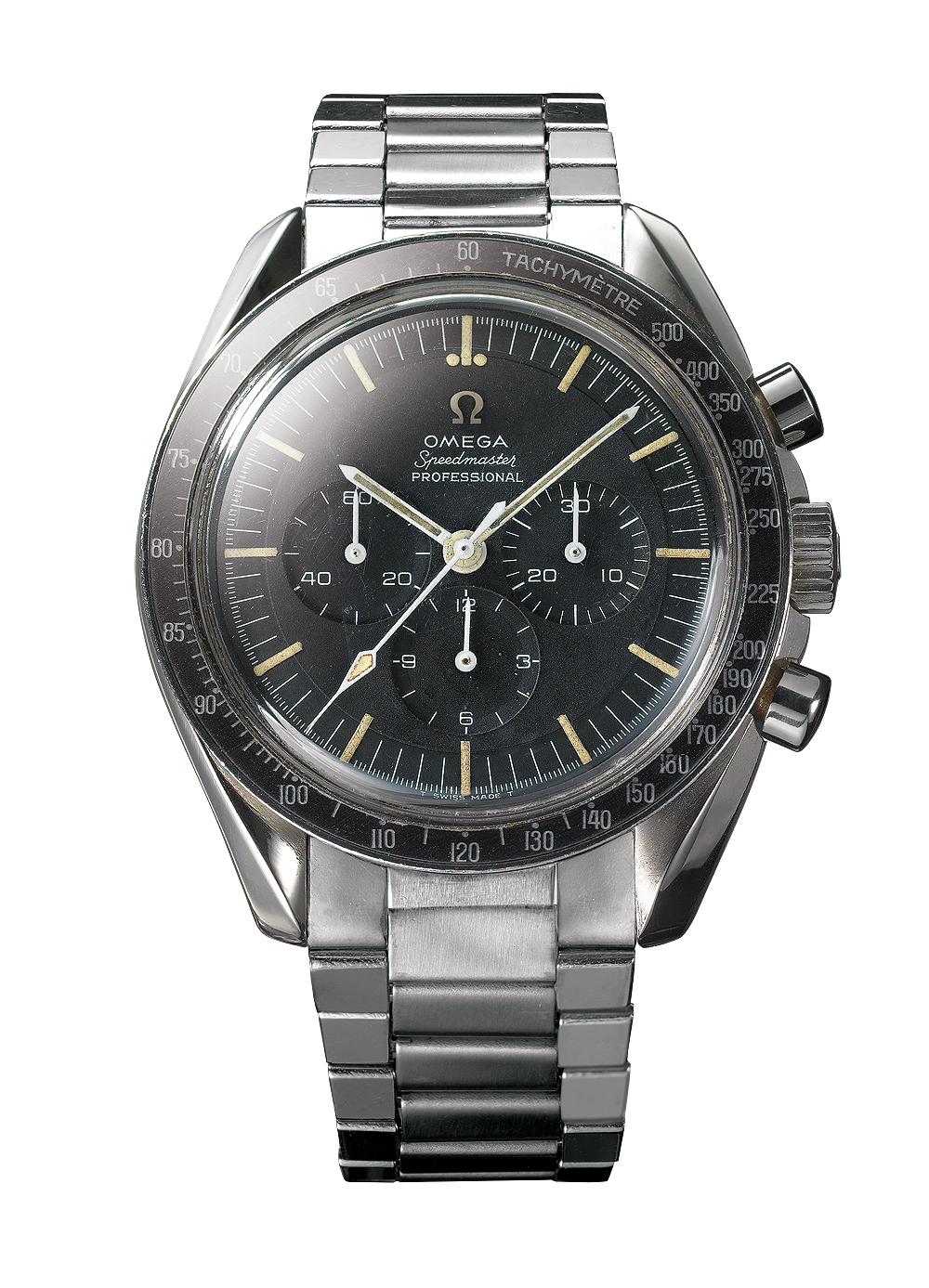
When Neil Armstrong and Buzz Aldrin stepped onto the lunar surface in 1969, this Speedmaster model became the first watch ever worn on the moon. It has also become the watch that has served on the most lunar missions. The watch was the first Speedmaster with the now-recognizable, asymmetrical case, a design that was meant to provide added protection for the crown and pushers. The word “Professional” was also added to the dial for the first time in this model.
1968: The Modern Moonwatch

Launched in 1968 with the new Caliber 861, this model marked a major turning point in the history of the Speedmaster. Not only was it the debut of the now-classic new movement, but it was also the first, from 1970 onwards, to include the words “FLIGHT-QUALIFIED BY NASA FOR ALL MANNED SPACE MISSIONS” and “THE FIRST WATCH WORN ON THE MOON.”
1968: Speedmaster with Racing Dial
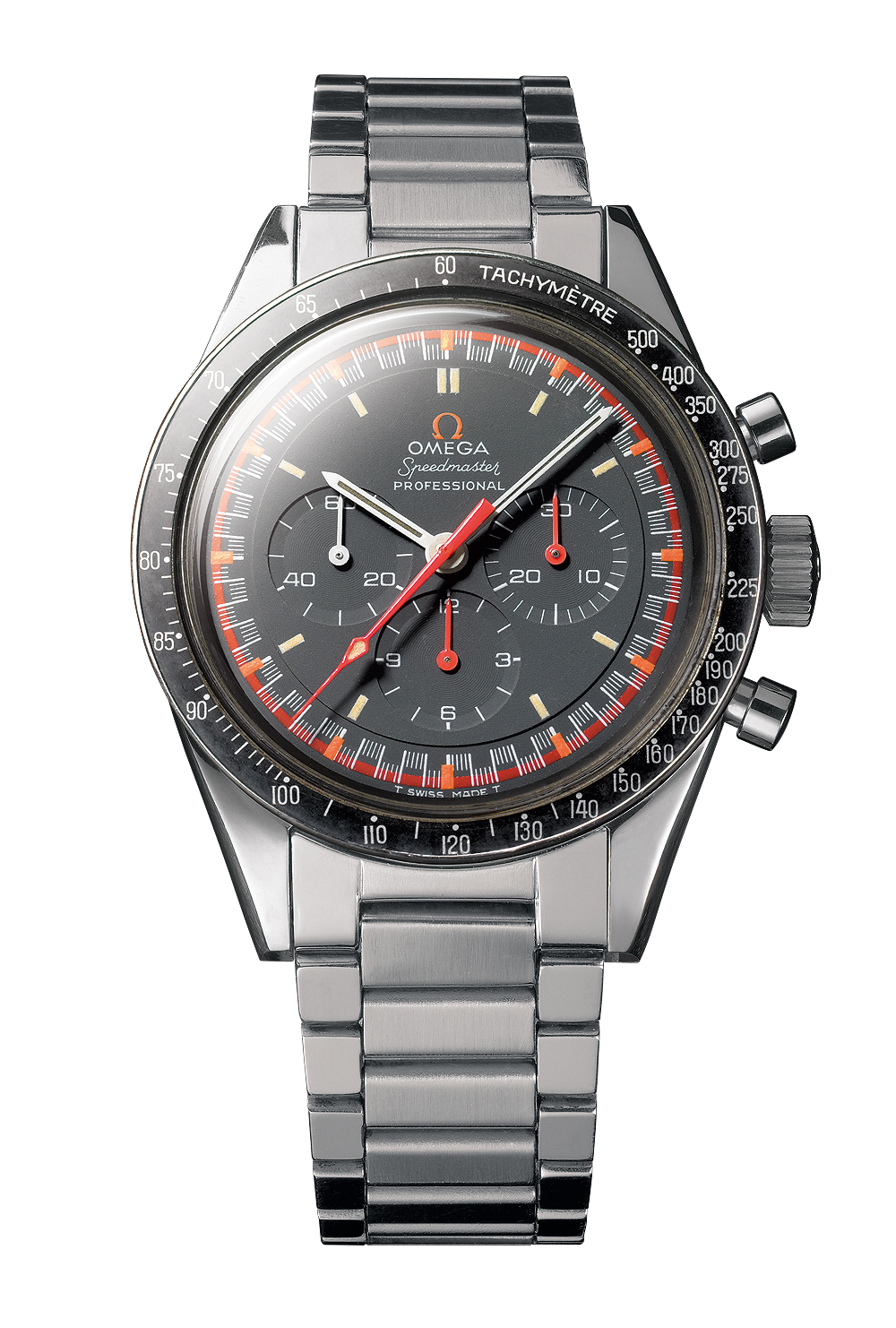
The origins of the rare Racing Dial model are still shrouded in mystery, but it is generally accepted that the bicolor minute markers and orange hands and logo were created to make the dial’s chronograph displays easier to read. This particular model has inspired subsequent editions throughout the years, including a limited-edition series which was released in Japan in 2014.
1968: The “Ultraman” Watch

Speaking of Japan, this rare piece, distinguished by its orange seconds hand, is renowned for appearing in the Japanese science fiction TV show “The Return of Ultraman” in 1971. The creator of the Ultraman series, Eiji Tsuburaya, was known for including interesting watches in his productions, and this very collectible Speedmaster is no exception. It is unknown how many genuine pieces still exist.
1969: The Gold Commemorative Edition
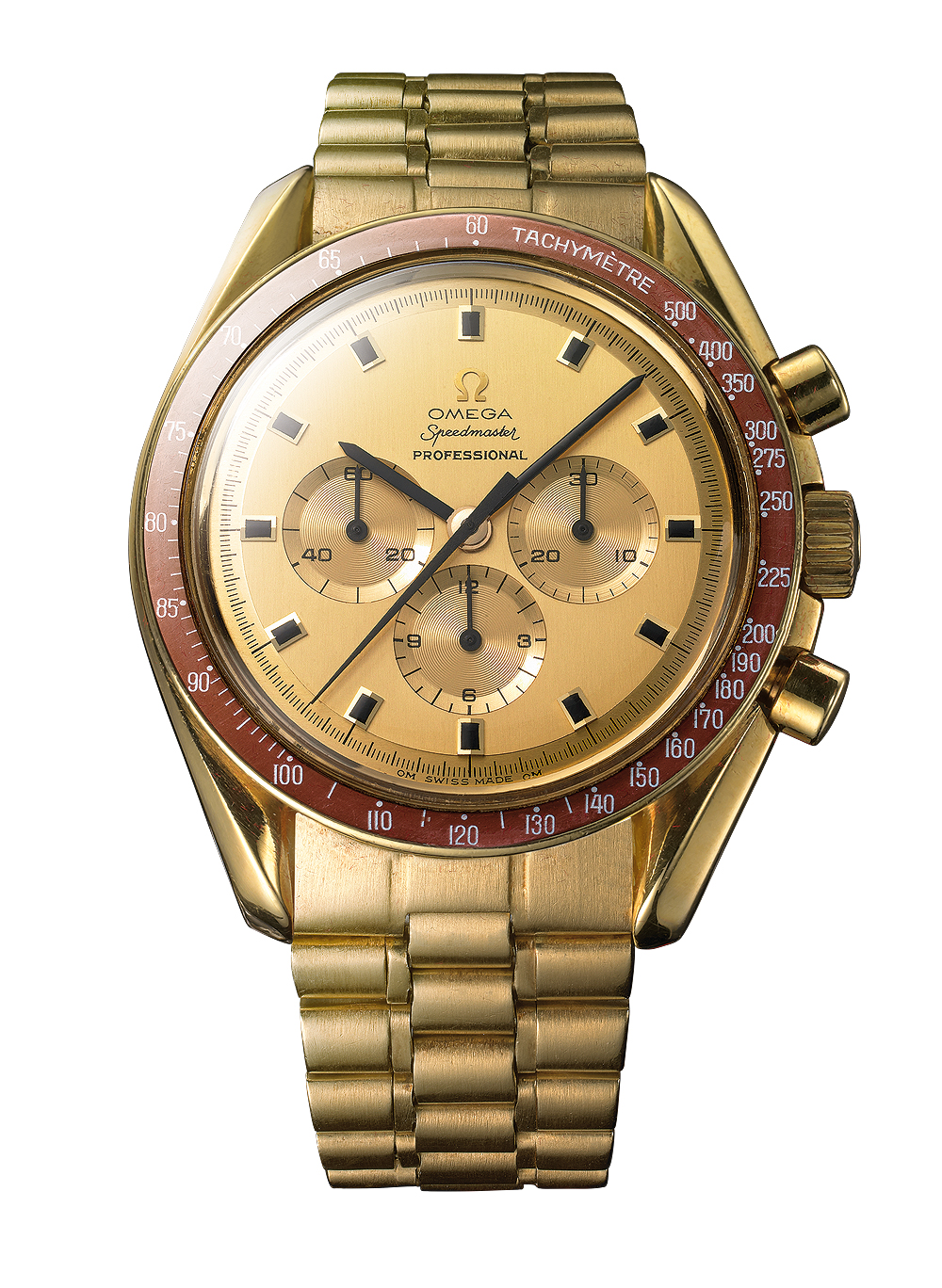
This was the first Speedmaster in 18k gold, created in a numbered edition and bearing a distinctive burgundy bezel. The first watches in this series were presented to 19 astronauts during a gala dinner in Houston, Texas on November 25, 1969, to celebrate the Apollo 11 moon landing. Three watches were also awarded posthumously to the three crew members of the Apollo I mission – Virgil Grissom, Ed White, and Roger Chaffee.
1969: The Speedmaster Mark II
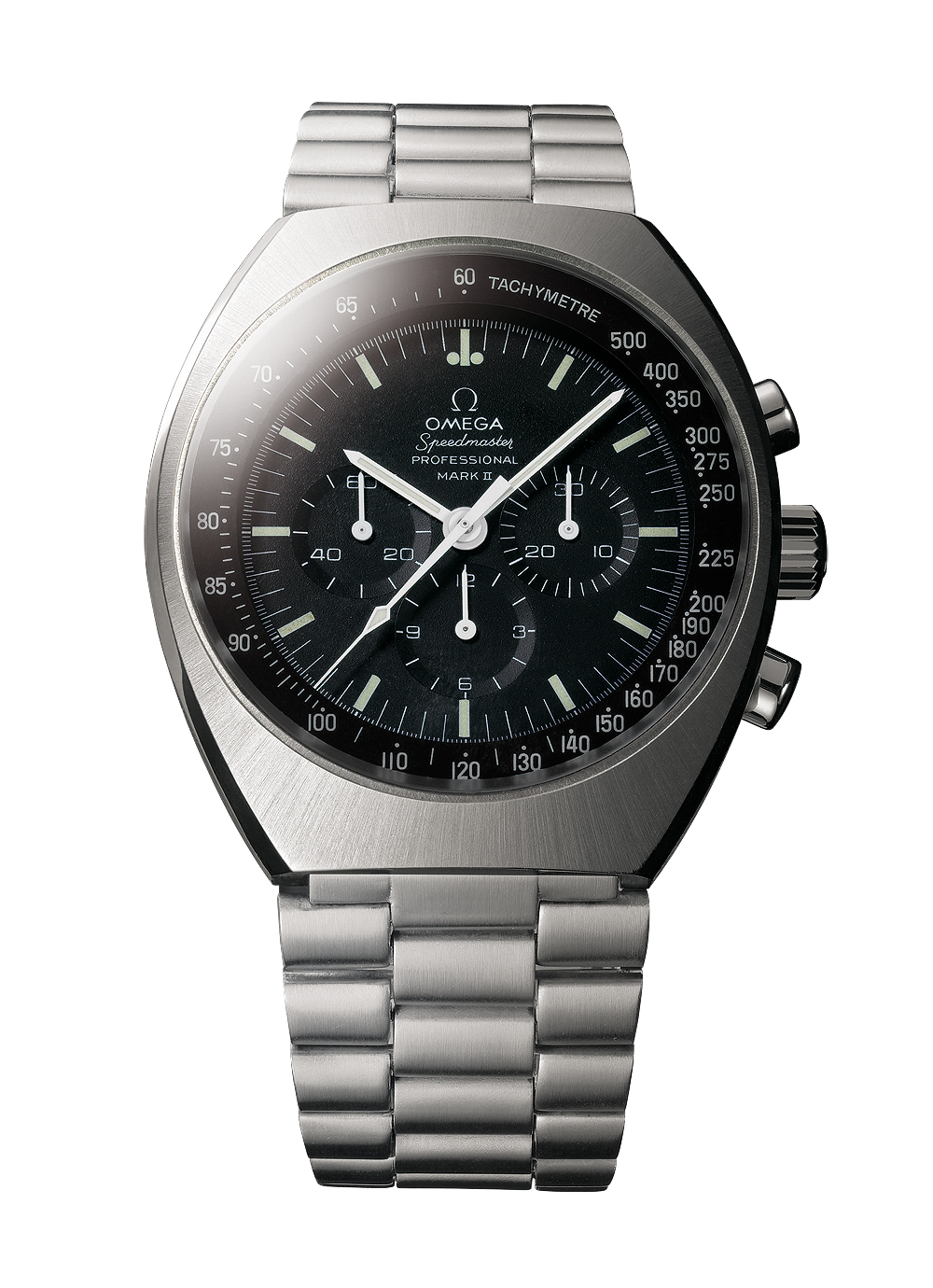
The Speedmaster Mark II signaled the first redesign of Omega’s popular chronograph. Created in 1969, it extended the Speedmaster line with a brand new look and was available in stainless steel, 18K gold, or gold-capped versions with various dial and timing scale combinations. The Mark II, with its barrel-shaped case and enhanced readability, was also the first Speedmaster that did not use a hesalite crystal. A modernized version of the watch debuted in 2014.
1969: The Alaska I Prototype
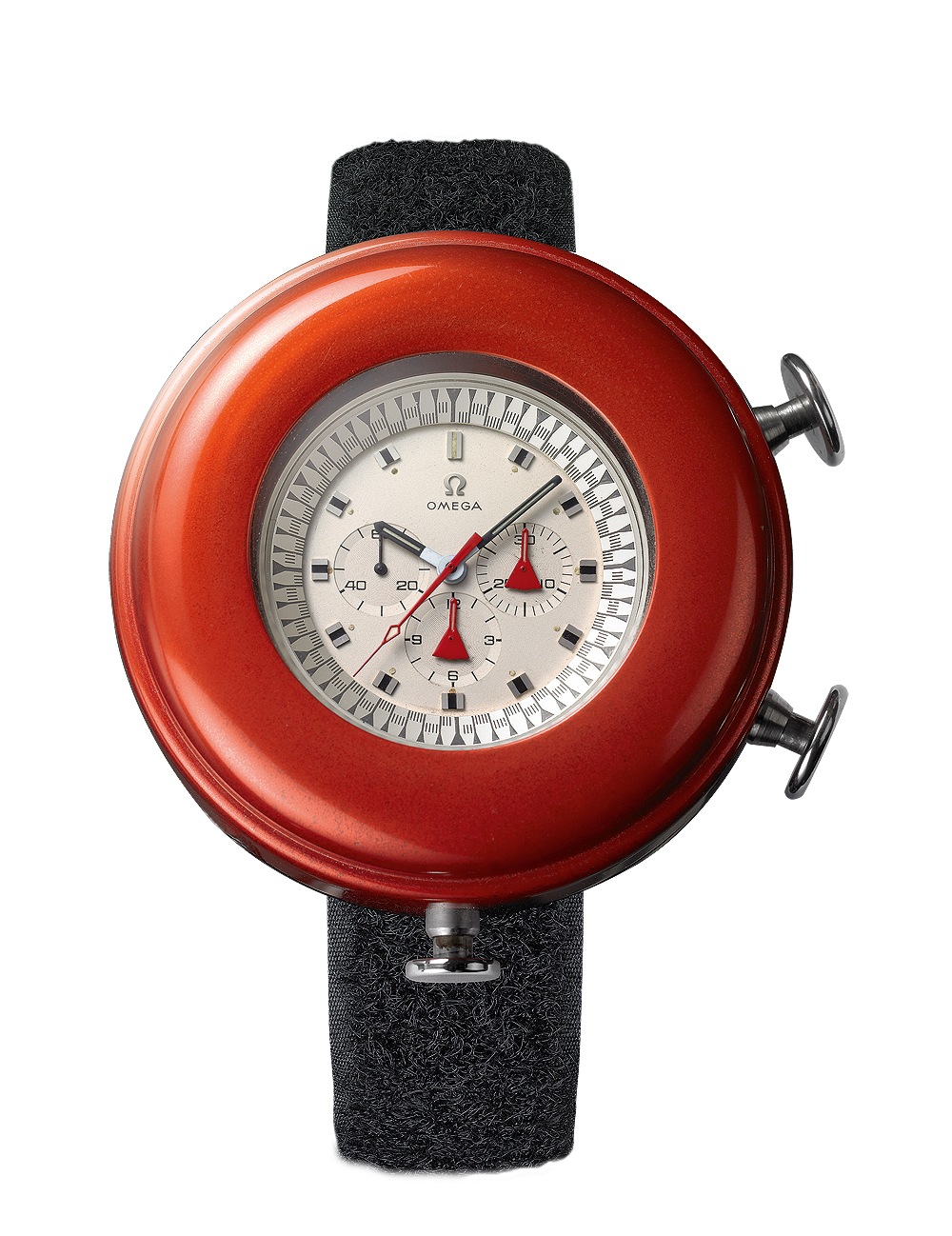
“Alaska” was Omega’s chosen codename for all of its top-secret projects that involved NASA. To meet the demands of the extreme temperatures of space, the “Alaska I” prototype had a removable anodized aluminum outer case — referred to as a “thermal shield” — and a pure titanium inner case, making it the first wristwatch in the world to be cased in pure titanium. The white dial was added to better reflect the heat of the sun.




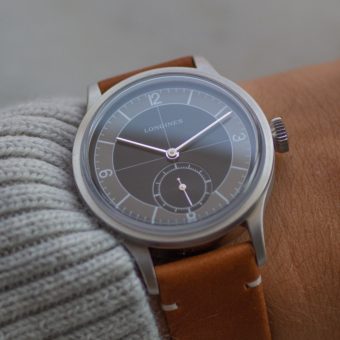


All very interesting. I inherited a 1965 Omega Speedmaster Professional from my late father. It did not have a strap, so I made a leather NATO and really looks beautiful with it attached. I just wonder if that abomination of a watch, the Moonswatch, will make the original Speedmasters more desirable and collectable.
I’m confused and hoping you can shed some light on the Speedmaster Racing you show above. It clearly has the grey with red and orange “second generation” racing dial that debuted on the 145.022 with c. 861 in 1969 as the dial says “Professional” and “T Swiss Made T” but it appears to be housed in a straight lug case which, as far as I understand, was never offered with “Professional” on the dial, a caliber 861, or in 1968. Please help me understand where this unusual model fits into the timeline of the Racing Dial Speedmasters and what reference number the case bears. Thanks in advance and for posting such a great piece on the most significant of the Speedmasters!
They are of the best in Omega watches,I myself love the old and new,I just purchased preowned from Sydney the 3570.50.00 Omega Speedmaster Professional Moonwatch with racing dial,just love this watch a lot.
A beautiful timepiece the ultraman 1968 if only they could reinstate such a iconic piece by any standards!
Captivating! Very Precise and distinctive traits of the Speedmaster Series!
I have always been curious about my Speedmaster. Thank you.
I bought my Omega Speedmaster Mark II while I was serving South Vietnam in April of 1970 and have worn ever since.
Love the speedmaster, hate the manual wind movement.